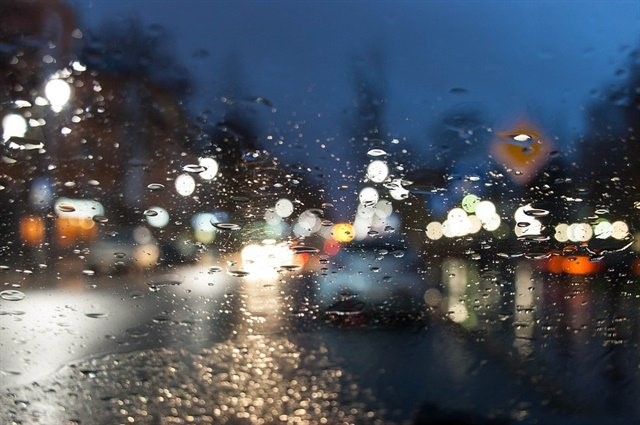Drivers distracted by use of cell phones and other electronic devices have been widely documented and are now recognized as a leading cause of traffic accidents. The Centers for Disease Control and Prevention (CDC) is one source of factual information regarding distracted driving.
Another source of fact-based information about traffic accidents related to distracted driving is the National Highway Traffic Safety Administration (PDF Download) (NHTSA).

Weather is one thing that can cause a driver to be distracted (Public Domain Photo).
Many states have laws that limit the use of cell phones while driving. The following summary bullets are from the Governors Highway Safety Association:
- Handheld Cellphone Use: 22 states, D.C., Puerto Rico, Guam and the U.S. Virgin Islands prohibit all drivers from using handheld cellphones while driving. All are primary enforcement laws — an officer may cite a driver for using a handheld cellphone without any other traffic offense taking place.
- All Cellphone Use: No state bans all cellphone use for all drivers, but 37 states and D.C. ban all cellphone use by novice drivers, and 23 states and D.C. prohibit it for school bus drivers.
- Text Messaging: Washington was the first state to pass a texting ban in 2007. Currently, 48 states, D.C., Puerto Rico, Guam and the U.S. Virgin Islands ban text messaging for all drivers. All but three have primary enforcement. Of the two states without an all-driver texting ban, one prohibits text messaging by novice drivers.
Talking, sending texts and e-mails from your phone while driving are not the only distractions to drivers and most of these other distractions are not regulated by States or the federal government.
Anything that takes your attention away from driving can be a distraction. Some examples of things that are common distractions for drivers include:
- Getting lost
- Eating
- Drinking
- Adjusting the radio, heater, or air conditioner
- Picking up an object from the passenger seat
- Smoking
- Driving in heavy rain or snow
- Listening to the radio
- Checking the fuel level
- Passengers adjusting radio, heater, or air conditioner
- Fixed focus on something in your field of view
- Applying make-up or combing your hair
- Talking and listening to others in the car
- Children in the car, particularly if they are fighting
- Picking up a dropped object
- Trying to put on or take off a sweater or jacket
- Passing an accident
- Using a GPS device
- Reading a map
- Reading a newspaper, book, or other material
- Distracting animals in the vehicle
- Passing an oncoming car with high beams on
- Daydreaming
- Watching the driver behind you in your rear-view mirror
- Looking at what other drivers are doing
- Reading Advertising/billboards
In addition to driving on public roads for work and pleasure, consider addressing and discussing distracted driving with operators of on-site equipment, large and small, in your Job Safety Analysis.
The Automobile Association of America (AAA) is a good source for additional information about distracted driving. One of the AAA articles, titled “ The Risks of Distracted Driving” is a brief article with a good definition of distracted driving and some good graphics that might be useful in your Job Safety Analysis meetings. Another good source of information about distracted driving is EndDD.org. The EndDD.org site also contains some very useful information for distracted driving refresher training and for use in building your Job Hazard Analysis.
JSABuilder.com is an easy to use on-line job safety analysis app to assist in preparing your JSA. Set up a free trial account today and follow us on Twitter @JSABuilder , where we Tweet about Health and Safety, provide Safety tips, and updates on current Health and Safety topics.